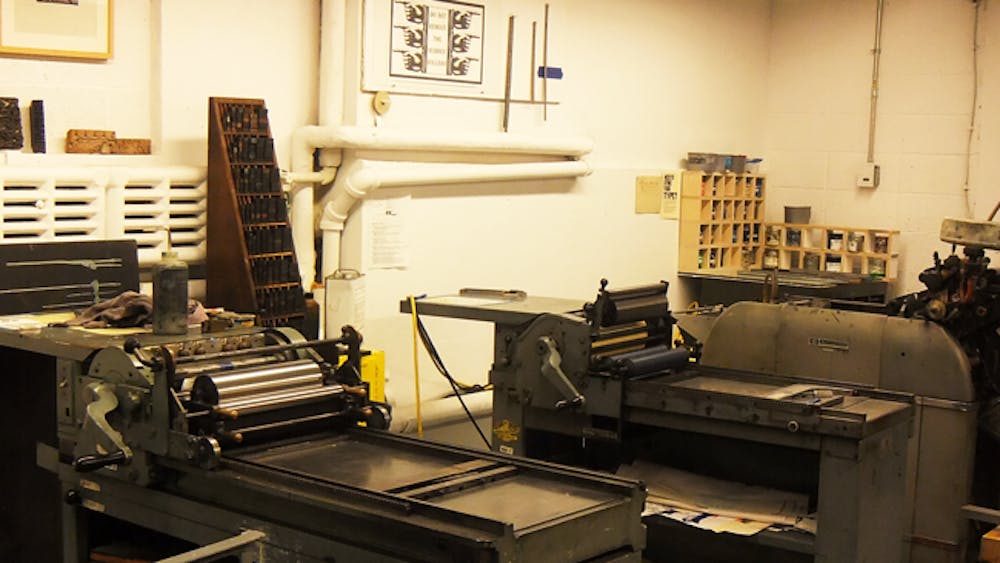David Comberg, design professor and co–founder of the Common Press, says the building primarily hosts graduate courses in the fine arts, and that classrooms can be found upstairs. Instead, he leads the way down, descending into a basement where the comingled smells of paint, ink and paper are even stronger. Around a corner and past several empty workspaces is another door, requiring yet another code. Comberg enters it and steps into the print studio.
Printing presses dominate half the space, the largest among them an imposing black iron beast that Comberg declares is an authentic nineteenth century press. He gives a brief demonstration of its use, requiring the manual maneuvering of levers to roll paper in and make the desired print. To the right are two more modern electric presses dating from the mid–twentieth century, these smaller and sleeker than their elderly neighbor, and more commonly used by those who work in the studio.
Set against the walls are cabinets full of equipment: both wooden and metal type pieces in various sizes and fonts, sheaves of paper, digital plates for designs too complex to arrange by hand and various instruments required for using the presses. On a table in the center of the room, what looks like a recently printed flyer sits beside containers of ink and metal type pieces still arranged to form words. Framed prints adorn the walls, some instructive in the printing process, some purely decorative.
This room comprises the center of the Common Press program, founded January 17, 2006, on the 300th anniversary of Benjamin Franklin’s birth. The Press is a collaborative effort on the parts of the School of Design, the Kelly Writers House and the Rare Book and Manuscript Library. It acts as a studio for classes in printmaking, graphic design and typography, but is also generally available to students interested in making use of its equipment—as long as they ask first.
Most Penn students may graduate without ever setting foot in the print studio, content to do their printing from computers in the library or their own dorm rooms. But those who do make use of it will benefit from a very different and artistic experience.
“[The Press] is a relief from the digital, dematerialized culture,” Comberg explains. “Although there is technology (largely mechanical) and there are many ways to bring digital methods into the process, it’s a material environment—tactile, slow and surprisingly enjoyable. It’s a very rewarding environment: you can produce an original design—a book, a print, or some hybrid—in a relatively short amount of time. As long as you’re curious and patient, it’s very satisfying.”
ANNIKA NEKLASON







